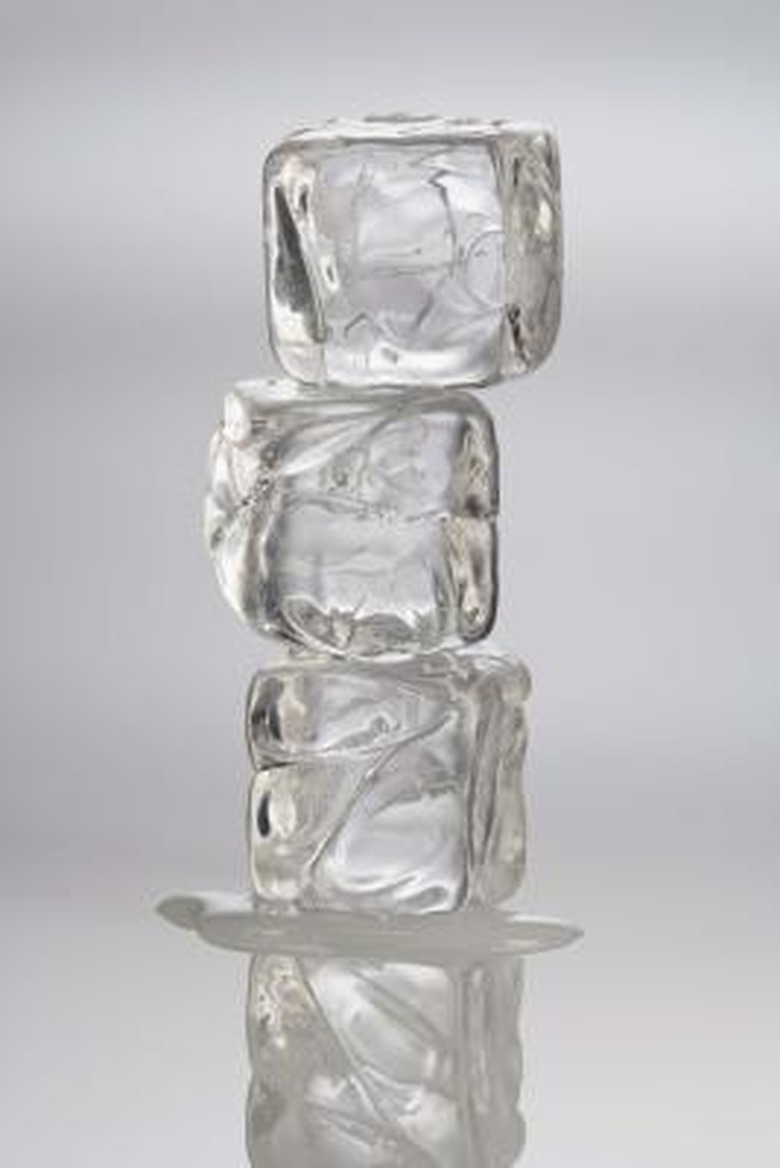Homemade Ice Keeper Science Project
Science projects are a great way to help students connect the material they learn in class to the real world. Building a homemade ice keeper is one way to teach a lesson in thermodynamics. Since a fundamental concept in thermodynamics is that heat flows from areas of higher temperature to areas of lower temperature, have students design an apparatus that keeps heat away from ice for as long as possible.
Step 1
Seal a block of ice in a sandwich bag.
Step 2
Place insulating material in a shoebox. Newspaper and plastic foam are examples of insulating materials, but you can try a variety of materials to see how well they insulate.
Step 3
Place the bag of ice in the shoebox. Close the box and keep it closed as much as possible. Frequent opening allows heat inside.
Step 4
Peek at the ice once an hour to see if it is melting. Measure the dimensions of the ice block every hour. Graph time and ice block volume to provide a visual representation of how effective your box design and insulation are. Ideally, ice block volume decreases at a slow rate.
Step 5
Determine whether your ice keeper design is optimal based on how long it kept the ice from melting. Your graph provides evidence. Consider what other insulating materials could further slow melting.
Things Needed
- Shoebox
- Plastic sandwich bag that seals
- Material to serve as insulation. Examples include foam packing peanuts, plastic foam and newspaper
- Block of ice, 3 by 3 by 3 inches
TL;DR (Too Long; Didn't Read)
Teach students about sustainability by requiring them to use only recycled materials as insulation.
Cite This Article
MLA
Lobo, Tricia. "Homemade Ice Keeper Science Project" sciencing.com, https://www.sciencing.com/homemade-ice-keeper-science-project-7962183/. 24 April 2017.
APA
Lobo, Tricia. (2017, April 24). Homemade Ice Keeper Science Project. sciencing.com. Retrieved from https://www.sciencing.com/homemade-ice-keeper-science-project-7962183/
Chicago
Lobo, Tricia. Homemade Ice Keeper Science Project last modified August 30, 2022. https://www.sciencing.com/homemade-ice-keeper-science-project-7962183/
